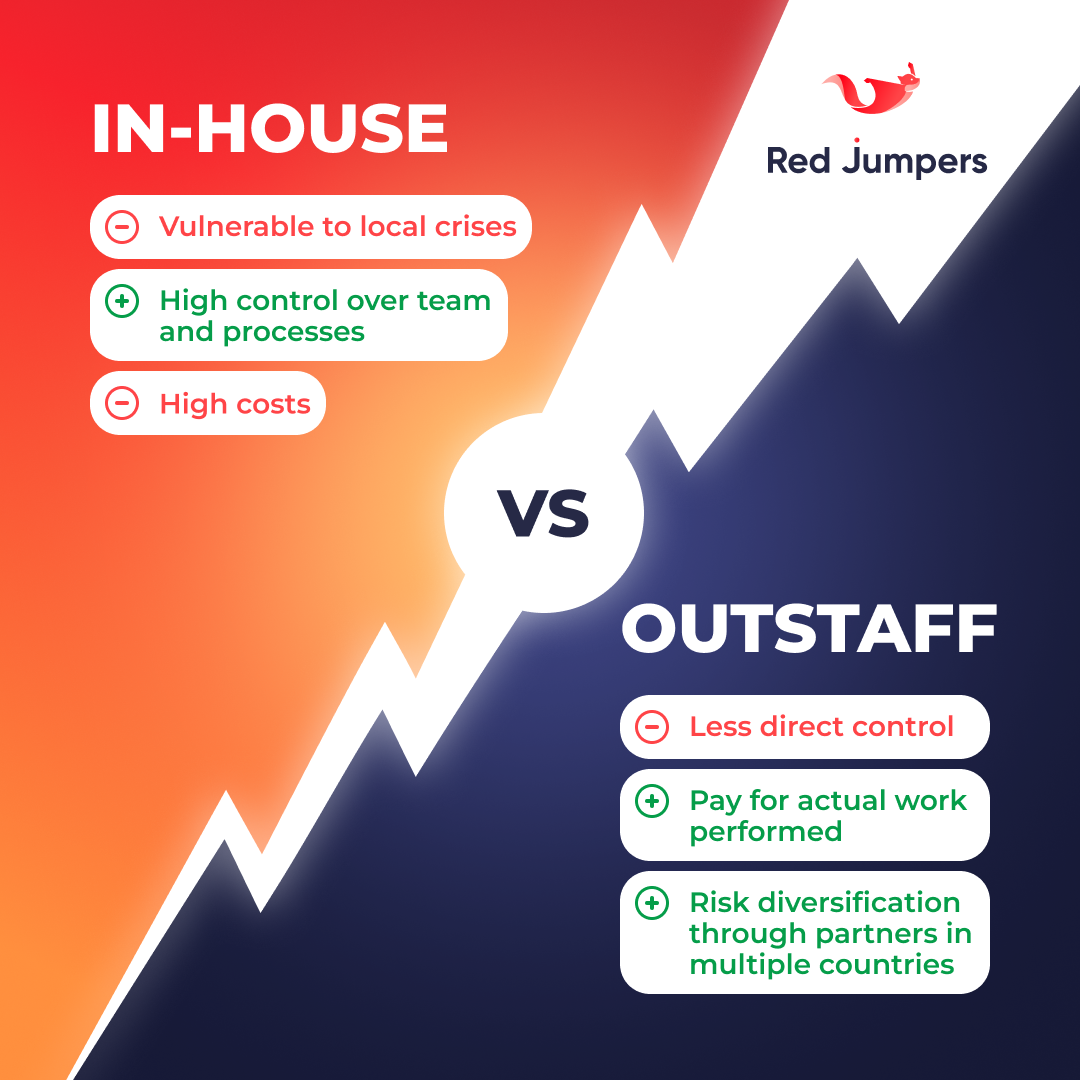New web technologies are emerging regularly. And for business owners, that’s both – a plethora of opportunities and a great challenge. In this article, we’ll cover the nine most influential trends in web development that are expected to shape the industry in 2024. Learn about them and decide which to implement in your business to achieve a sustainable edge and steer your business toward success in the dynamic and ever-evolving digital sphere.

#1 Artificial Intelligence
In the realm of modern web development, Artificial Intelligence (AI) and its accompanying tools have become indispensable, reshaping the entire landscape of the industry.
Integrating AI into web development is not just about automation; it’s about creating dynamic, user-friendly, and highly optimized websites. Whether it’s enhancing the front-end with personalized experiences or streamlining back-end processes, AI is a crucial tool for driving business growth in the digital landscape.
Let’s take a look at how AI can benefit both developers and businesses:
Front-end Enhancements
- Chatbots. AI-powered chatbots can provide real-time assistance, answer queries, and enhance user engagement. By analyzing user inputs, they offer personalized interactions, making the website more user-friendly.
- Personalized recommendations. AI algorithms analyze user behavior to suggest relevant content, products, or services. This both improves the user experience and boosts conversions.
Back-end Automation
- Automated testing. AI tools can streamline the testing process by automating routine tasks. This not only reduces the time and effort invested in testing but also improves accuracy, ensuring a more reliable and robust web application.
- SEO optimization. AI algorithms assist developers in adhering to SEO best practices. They can analyze search engine algorithms, suggest improvements, and optimize content, ultimately boosting a website’s visibility and ranking.
#2 Progressive Web Apps (PWAs)
Progressive Web Apps (PWAs) have emerged as a noteworthy trend in web development, offering a blend of the best features from both web and mobile applications. These applications are designed to provide a seamless and engaging user experience, irrespective of the device or browser being used.
They work well on various platforms without requiring downloads, adapting to different screen sizes and offering offline functionality by caching resources. PWAs provide an app-like experience with smooth transitions and gestures, ensuring improved performance through service workers. With HTTPS for security, they are easy to update and discoverable through search engines, contributing to a faster, more secure, and accessible user experience. PWAs represent a shift in web development towards meeting user expectations for reliability, speed, and engagement.
Some of the well-known companies that have already reaped benefits from implementing PWAs include Alibaba, Twitter, OLX, Lancôme, etc.
#3 WebAssembly
When diving into web application development, performance takes the front seat. JavaScript’s limitations, particularly in handling heavy calculations, can drag down the user experience significantly.
This stands out as a primary factor contributing to the increasing popularity of WebAssembly. This technology allows code from any programming language to be compiled into bytecode, seamlessly running in a browser.
WebAssembly, characterized by an open standard, introduces a portable binary-code format for executable programs. It also brings forth a corresponding textual assembly language and interfaces to facilitate interactions between programs and their host environment.
Let’s break down the advantages:
- WebAssembly works independently of programming language and platform, providing flexibility in development choices.
- It operates independently of the underlying hardware, ensuring a smooth and consistent performance across various devices.
- The code executes with speed, a crucial factor for enhancing the overall performance of web applications.
- WebAssembly ensures a high level of security in executing code within the browser environment.
The magic happens at the intersection of a small footprint, cross-platform scripting, and speed – a trio that defines modern web development.
#4 Blockchain integration
Blockchain, an encrypted database storage system, diverges from traditional methods by organizing information into blocks that are linked together as a chain. Its advantages are myriad, with heightened security and error-free transactions topping the list. Other benefits include:
- High flexibility (It’s not controlled by one person or group)
- Immutability (Once something is recorded, it can’t be changed)
- Effective data protection (It’s safe and hard to hack)
- Transparency assurance (Everyone can see what’s happening)
Blockchain is useful in different ways:
- Supply chain management: Allowing for easier to product tracking
- Payments: Reducing the need for intermediaries and ensuring real-time settlement
- Credentials verification: Creating a secure and unalterable record
- Identity management: Keeping personal info safe and tamper-proof
- Better analytics: Ensuring data used for analysis is reliable
- Decentralized Apps (DApps): Changing how businesses work
- Securing the Internet of Things (IoT): Making sure connected devices are safe
#5 JavaScript frameworks
JavaScript frameworks are like toolkits for developers, offering pre-written code for common programming tasks. Despite being around for a while, JavaScript remains a powerhouse, reigning as the most widely used programming language globally. As we look ahead, the evolution of JavaScript frameworks will play a significant role in shaping new web development trends.
The upcoming wave of JavaScript frameworks is poised to extend its influence across UI/UX, testing, and product management realms. Leveraging JavaScript’s inherent benefits – immediate feedback, high efficiency, and coding simplicity – these frameworks will unlock their full potential. The language’s continued dominance in the programming landscape is a testament to its adaptability and preference among developers.
React, Vue.js, and Angular stand out as two popular JavaScript frameworks, offering developers powerful tools to streamline and enhance the web development process.
Unlock the secrets and master the skills with “The Ultimate Guide to Android App Development“. Elevate your expertise, create stellar apps, and stay ahead of the curve.
#6 Focus on web performance
The focus on web performance is set to take center stage as a prevailing trend in 2024. With users demanding near-instant load times, the swiftness and efficiency with which a website operates are paramount. Beyond meeting user expectations, web performance directly influences critical factors such as search rankings and conversion rates.
As search engines increasingly prioritize fast-loading websites, developers will be compelled to implement optimization strategies, leveraging techniques like efficient coding, image optimization, and content delivery network (CDN) integration. The quest for seamless user experiences will propel the prioritization of web performance, ensuring that websites not only meet but exceed the speed expectations of a digitally savvy audience.
#7 Rise of remote/hybrid workspaces
The shift towards flexible work arrangements has transformed the way development teams collaborate and execute projects. Web developers are increasingly leveraging cloud-based tools, collaborative platforms, and innovative project management systems to facilitate seamless communication and cooperation, irrespective of geographical distances. The demand for web applications that enhance remote collaboration, productivity, and user engagement is higher than ever. As the workforce embraces a hybrid model, where remote and in-office work coexist, web developers are at the forefront of creating solutions that cater to the dynamic needs of this evolving work culture.
#8 Omnichannel experiences
Users now demand a seamless and unified journey across various devices and platforms, emphasizing the need for web experiences that transcend individual screens. Developers are steering towards optimization strategies catering to multiple screen sizes, embracing mobile-first approaches to ensure a consistent and engaging user experience. The trend reflects a shift in mindset from merely responsive design to a holistic approach, where web applications seamlessly adapt to diverse contexts, be it on a desktop, tablet, or mobile device.
#9 Web privacy and security
With data privacy regulations becoming more stringent, the emphasis on user privacy and consent is paramount. Web developers will play a crucial role in ensuring that websites adhere to these regulations by implementing robust privacy measures and consent mechanisms. Additionally, the rising threat of cyber attacks underscores the importance of beefing up security protocols to safeguard user data. Expect to see advancements in encryption technologies, secure authentication methods, and proactive measures against vulnerabilities as web developers strive to create online environments that prioritize user privacy and shield against potential threats.
Conclusions
Keeping up with trends can be challenging due to their rapid changes, but it’s undoubtedly a worthwhile endeavor. By staying attuned to the latest developments and influencing the future of web development, you have the opportunity to provide users with a top-notch experience, boost your web app’s ranking, and tap into new markets for your services!
Looking for a reliable partner agency for your next project? Contact us today. Together, we’ll navigate the ever-evolving landscape, implement trend-setting strategies, and redefine excellence in web development.




